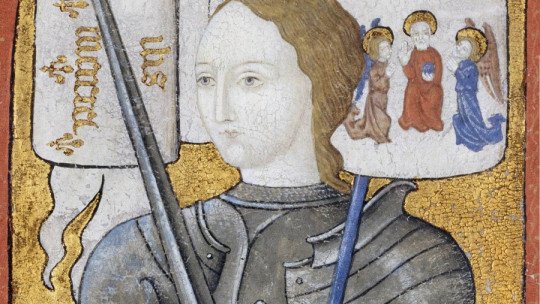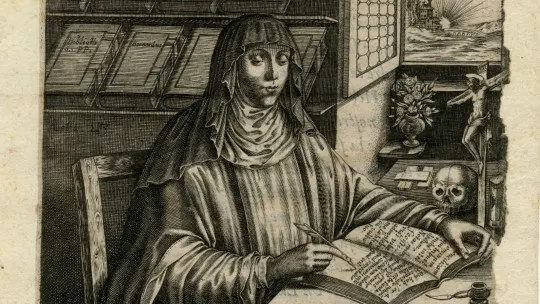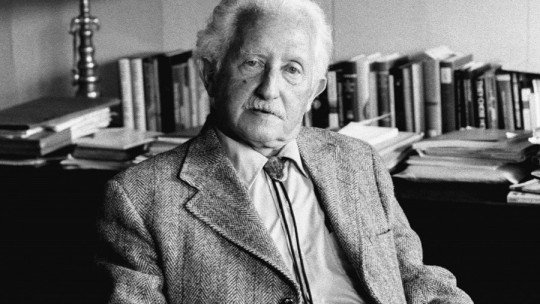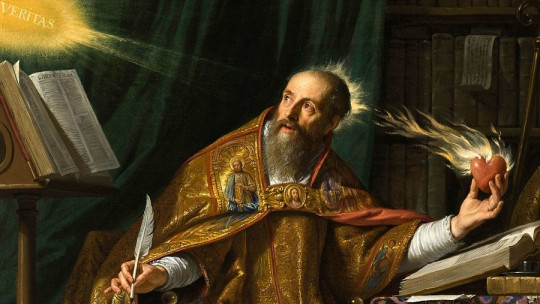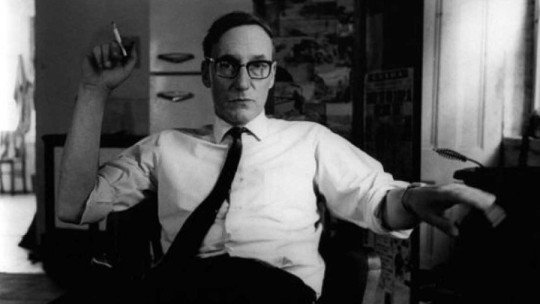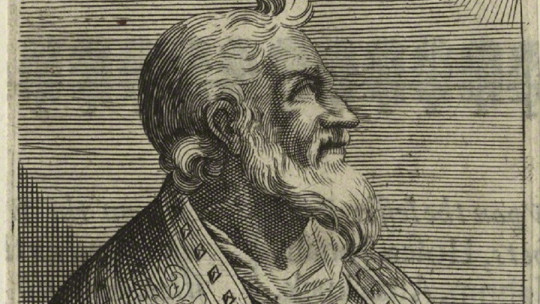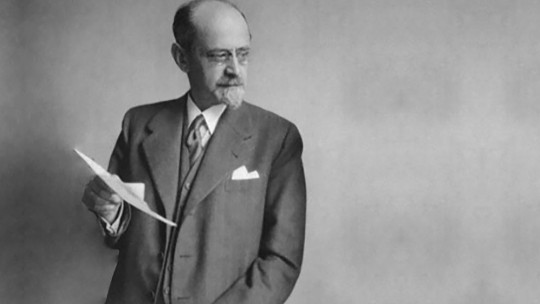Contradictory personalities are often very attractive to the public, and Joan of Arc is certainly among them. For some, she is a saint and devout Catholic; for others, a liar; For third parties, a poor sick person. But who was Joan of Arc really?
The little that is known about the young warrior who led the French armies against the English enemy is known thanks to the documents relating to her trial, which scrupulously record what she thought, what she believed in and what her opinion was about the great events that had taken place. However, all this leaves us with the same question again. Did she really believe in her divine messenger status? Was she? Or perhaps she kept up her ruse until the end?
In today’s article we examine the figure of Joan of Arc and enter the context of the time to understand what her true historical magnitude was. We tell you the life of the one who was hailed as the “Maid of Orleans”, Joan of Arc.
Brief biography of Joan of Arc, the “Maid of Orleans”
The most logical thing is to think that, if Joan of Arc had been a forger, she would not have shown the obstinacy that she maintained until the end, to the point of allowing herself to be dragged into the flames. Maybe she believed in her mission after all.
In 1920, Pope Benedict XV elevated her to the status of saint. which not only erased his charges (which, de factohad already been annulled in 1456, after the review of the trial) but also recognized the sanctity of his visions. But Joan of Arc was already a French national emblem long before; especially, since the Romanticism of the 19th century became keenly interested in the past of the French people and, with it, the heroine became the “unifier” of the French homeland.
The Hundred Years War and the foundations of the French nation
To fully understand the figure of the Maiden, it is necessary to understand the context in which she moved: the so-called Hundred Years’ War, which faced England and France for (exactly) 116 years. Without this backdrop, the appearance of the character cannot be explained, which was also preceded by a legend that spoke of a “maiden who would save France” and which, ultimately, was probably what convinced the Dauphin Charles to trust in the girl.
The causes of the long war (the longest in the history of Europe) must be sought several centuries ago; specifically, when the Normans, who had their fiefdom in Normandy (present-day France), landed in England and, through the famous Battle of Hastings (1066), took over the territory. Successive English monarchs would therefore have “French” ancestry.
On the other hand, The marriage of Eleanor, Duchess of Aquitaine, and the King of England, Henry II, had left the French king in a rather humiliating position. : Although the Duchy of Aquitaine was, legally, its vassal, in practice its territory was much larger. The union of Eleanor with Henry, in addition, threatened the French crown with an Angevin empire that carried out a pincer drowning on French territory.
There is also a third cause, possibly the most important. In 1328, Charles IV of France died without issue, triggering a wave of claims to the French throne. They come from both France and England. The two houses have kinship reasons for such a claim; However, the fuse finally lights when the French king confiscates Aquitaine (remember, territory linked to England) and Richard III, English monarch, reacts angrily through the imminent claim of the French crown.
The young peasant girl who became a soldier
It is not our intention to make a summary of what the Hundred Years’ War entailed, but it is essential to sketch it to understand in depth the figure of the Maid of Orleans. Joan was born at a time when the conflict had been active for almost a century and, probably, she had heard the legends about the maiden who would “save France”, with which she would later identify.
At her trial, Juana declared that she was “about nineteen years old.”. The confusion is normal, since, prior to the 16th century, neither births nor baptisms were recorded in the parishes. Historians have calculated the year 1412 as his year of arrival into the world based on this statement.
The place of birth is clear, it is even known who his family was. Joan was born in the village of Domrémy, in the Lorraine region, daughter of the wealthy peasant Jacques d’Arc or Darc. (we can find his last name written in various ways) and his wife Isabelle. It seems that the family never suffered poverty, since Jacques was, in addition to being a landowner, a public figure related to municipal politics.
This circumstance may have allowed Juana to know more deeply than those close to her about the situation in France, although the fire of Domrémy, caused by the Burgundians and which must have happened when Juana was still small, had a profound impact on the young woman’s spirit.
In any case, and even though she was not a poor peasant, the girl was illiterate. It is known that he dictated the letters he sent, already as a soldier, and that he only knew how to sign (Jehannewhich is how his name was written in 15th century French).
Divine voices?
Also thanks to the trial documents we know at what age Juana began to “listen” to the voices that, supposedly, ordered her to confront the English and crown the Dauphin. It was at the age of thirteen, in the garden of her father’s house, when she “saw a glow coming from the side of the church.” She declared that she knew immediately that the voice was from the Archangel Saint Michael, whom she was later able to see with her own eyes. Also in her statement, Juana said that, at first, the voices (which were joined by those of Saint Catherine and Saint Margaret) only urged her to be a good Christian, but that, at the age of sixteen, they began to talk to her about her mission of “ rescue France.”
Did Juana really believe in the supposed voices? This thorny issue has not been resolved, and probably never will be. In this sense, experts point out three possibilities:
Finally, it is necessary to mention the religious explanation held by believers, according to which the voices would really be a divine manifestation.
Objective: crown Charles and save France
In any case, in 1429 Joan left for Vaucouleurs, with the aim of meeting the captain of her French garrison, Robert de Bradicourt. To the military man’s astonishment, the young woman asks him for an escort to arrive safely to Chinon, where the Dauphin is located. Her motive: to get Charles to put her in command of an army with which she can reconquer Orleans, besieged by the English since the previous year, and make their way to Reims and crown the Dauphin as the rightful king of France.
We do not know if Joan had to overcome much resistance from Robert de Bradicourt; In any case, he granted what he requested. Her interview with the Dauphin was equally successful. It is said that, to check if the girl was really sent from God, Carlos camouflaged himself among the public and put a nobleman in her place.
Juana managed to recognize him among the crowd and knelt before him, which convinced the Dauphin that he could trust the girl. However, he ordered that a series of tests be carried out on Juana, both to confirm the holiness of her visions as her condition as a virgin.
The siege of Orleans was a true triumph, as the city was liberated and the French troops managed to advance north. Juana’s role in this battle is widely discussed by historians; It is known that she was not alone in command of the army, as she was accompanied by experienced generals, which raises the possibility that the young woman was just a symbol to encourage the soldiers. In any case, we do know that Juana participated in the fight, since she was wounded in the shoulder in the scuffle.
Other smaller cities fell on the way to the north, so the route to Reims was clear. On July 17, 1429, Charles of Valois was finally crowned as Charles VII, in a solemn ceremony presided over by Joan of Arc herself. A part of his “sacred” mission was completed. There remained, however, a second part: definitively expel the English from French soil.
Betrayal, trial and death
In May 1430, Joan and her troops headed towards Compiègne, which was also in the hands of the Burgundians, allies of the English. On the 23rd, her army fell into an ambush perpetrated by those that resulted in the kidnapping of the Maiden and her delivery (after payment of a large ransom) to the English.
Joan of Arc was taken to Rouen, where England had the seat of its government on French territory. During the five months that her trial lasted, the young woman remained locked up in deplorable conditions. Among other things, she refused to give up the men’s clothes she was wearing because “they had tried to rape her.” These masculine clothes were, by the way, one of the charges brought against him at her trial, since for a woman to renounce her clothing represented an “affront to God.”
The trial was actually very harsh, expressly designed so that she would be found guilty. Juana was condemned from the beginning, not for religious reasons (these were the excuse for her death sentence) but for obviously political reasons. Her figure was too powerful; His presence encouraged the French troops towards victory and this was something that the English could not allow.
Juana had to face a court of dozens of doctors and judges and was not allowed to have a lawyer. The judges probably thought this would hasten her sentence, but they were unaware of the illiterate girl’s reasoning ability and her ability to remain silent when she considered silence to be her best response. At nineteen years old, Juana demonstrated a prudence and an ease of oratory worthy of admiration, which left those present astonished.
It was of no use, however. Pushed to the limit, she was led before the pyre so that she could see with her own eyes the horrendous end that was in store for her if she did not recant. Moved by fear, the young woman succumbed and signed a statement confessing her “crimes.” ; among others, charges of witchcraft, deception and public scandal for renouncing what was “natural” about her sex. His retraction entailed a considerable reduction in the sentence, which became life imprisonment.
However, the day after the document was signed, Juana appeared again dressed as a man. In response to the judges’ questions, she assured that Saint Margaret and Saint Catherine had reproached her for her weakness, and that she was returning to claim the place she had renounced. Those words were enough for his conviction Well, at that moment, Juana was considered a repeat offender.
On May 30, 1431, Joan of Arc was burned in the Market Square in Rouen. Before dying she asked to have a cross before her eyes, and it is known that her last words were “Jesus!” heartbreaking, as the fire consumed her. No one came to her aid; Not even Charles VII, who had obtained the longed-for throne thanks to her.
Two decades later, her mother, Isabelle, secured a mistrial and a wipe of her daughter’s memory. It was the year 1456; The war had finally ended and France was consolidated as a strong kingdom. This “cleansing of image” suited Charles VII’s policy very well, since it legitimized, once again, his accession to the throne. There is no doubt that Joan of Arc’s destiny was marked by the turbulent politics of her time. And I also remember her.

